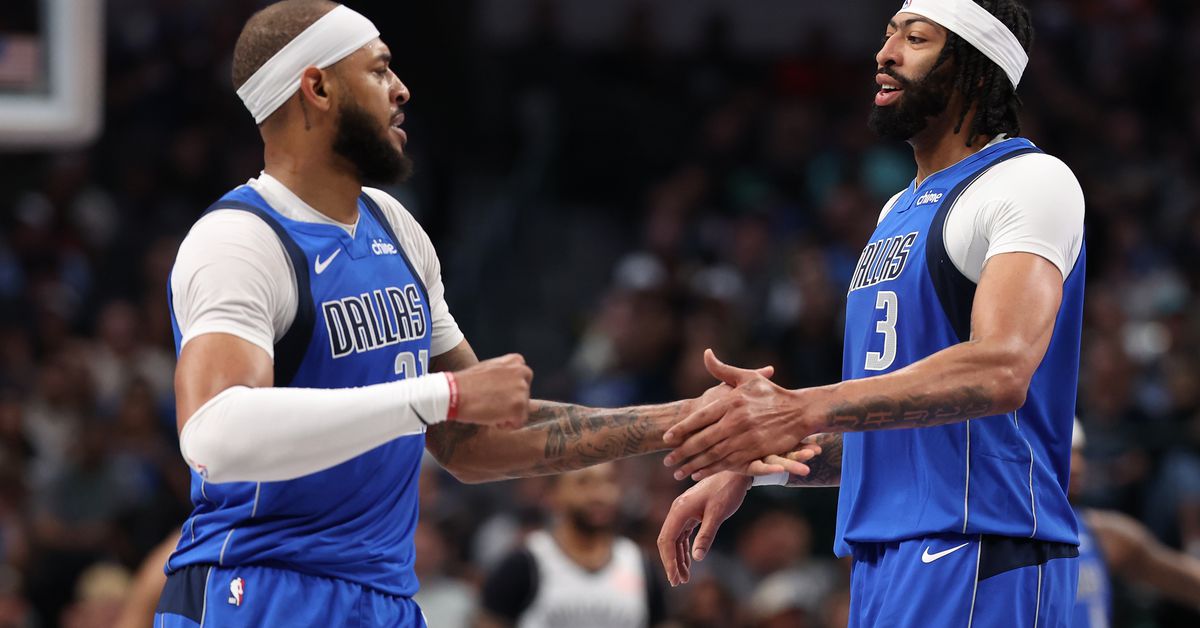The Dallas Mavericks’ season hangs in the balance as they fight for a play-in spot. The return of center Daniel Gafford after a 21-game absence due to injury offered a glimpse of what the team could be, but also highlighted significant questions that need answering in the offseason. Gafford’s energy and intensity were evident, yet the Mavericks’ struggles with consistency and defensive vulnerabilities remain a concern. This article delves into the implications of Gafford’s return and what it means for the Mavericks’ future.
The Mavericks’ front office faces a crucial offseason, needing to assess the current roster and identify areas for improvement. Key questions revolve around the team’s defensive capabilities, particularly their vulnerability to three-point shooting, and how to maximize the potential of their frontcourt. With only a handful of regular-season games left, every game is vital to determine the team’s direction.
Gafford’s Return and Initial Impact
Daniel Gafford’s return to the lineup provided an immediate boost in energy and athleticism. Starting alongside Anthony Davis, Gafford brought his trademark intensity to both ends of the court. However, even with Gafford back, the Mavericks struggled to maintain consistency throughout the game against the Nets. This inconsistency underscores the challenges the team faces as they try to solidify their playoff chances.
Despite Gafford’s positive contributions, he appeared to be nursing an injury towards the end of the game, a worrying sign given his recent absence. While he assured reporters he was fine, the incident highlights the team’s overall injury woes and the need for a more durable roster moving forward.
“This was just a low energy and effort game,” said Coach Kidd after the game.
The Trade’s Unforeseen Consequences
The Mavericks’ trade earlier in the season, which saw Luka Doncic depart for Los Angeles, has had a ripple effect on the team’s performance and direction. The injuries to key players like Davis and Gafford, who have collectively missed 40 games since the trade, have further complicated matters. These absences have prevented the team from establishing any real chemistry or consistency.
Furthermore, the prolonged absence of Dereck Lively II and the injuries to PJ Washington and Kyrie Irving have left the Mavericks with a disjointed roster. This has made it difficult for the coaching staff to evaluate the team’s true potential and identify the necessary adjustments for the offseason.
Offensive Strengths, Defensive Liabilities
Monday’s game against the Nets highlighted the Mavericks’ offensive strengths and defensive liabilities. While the team managed to score 56 points in the paint, showcasing the potential of their size and athleticism, they struggled to contain the Nets’ three-point shooting. Brooklyn, despite being ranked 27th in three-point percentage, shot 40% from beyond the arc and outscored the Mavericks 60-30 from the perimeter.
This disparity underscores the need for the Mavericks to improve their perimeter defense and find ways to neutralize opposing teams’ outside shooting. Coach Kidd acknowledged the importance of effort and energy on the defensive end, but also emphasized the need to investigate whether the team can effectively slow down opponent three-point shooting with their current lineup.
Key Questions Heading into the Offseason
As the Mavericks approach the offseason, several key questions need to be addressed. First and foremost, the front office must evaluate the long-term fit of Davis and Gafford together. While their combined size and athleticism offer potential, their defensive rating as a duo has been underwhelming. This raises concerns about their ability to effectively protect the paint and defend against versatile offensive schemes.
Additionally, the Mavericks must determine how to improve their perimeter defense and find players who can effectively guard multiple positions. The team’s struggles against three-point shooting have been a recurring issue, and addressing this weakness will be crucial for their future success. The draft and free agency will be critical avenues for addressing these needs.
Evaluating the Team in the Final Games
With only a handful of regular-season games left, the Mavericks have a limited opportunity to assess their current roster and identify areas for improvement. The return of Lively will provide a further glimpse into the team’s potential, but without Irving, they will not be fully whole before the offseason. These final games will be crucial for Nico Harrison to make informed decisions about the team’s direction.
The Mavericks must use this time to experiment with different lineups and strategies, evaluating the effectiveness of various player combinations and identifying the strengths and weaknesses of the team’s overall approach. This will provide valuable insights that can inform their offseason moves and help them build a more competitive roster for the future.
Conclusion: An Uncertain Future
Daniel Gafford’s return provided a glimpse of hope for the Mavericks, but also highlighted the significant questions they face heading into the offseason. The team’s struggles with consistency, defensive vulnerabilities, and injury woes underscore the need for a comprehensive evaluation of the roster and a clear direction for the future. The upcoming offseason will be the most important of Nico Harrison’s tenure as general manager.
The Mavericks must address their defensive weaknesses, improve their perimeter shooting, and find a way to maximize the potential of their frontcourt. With a limited number of games left to assess the team, every game is crucial in determining the direction of the franchise. As the Mavericks navigate this uncertain future, their ability to make informed decisions and build a competitive roster will be paramount.

Leave a Reply